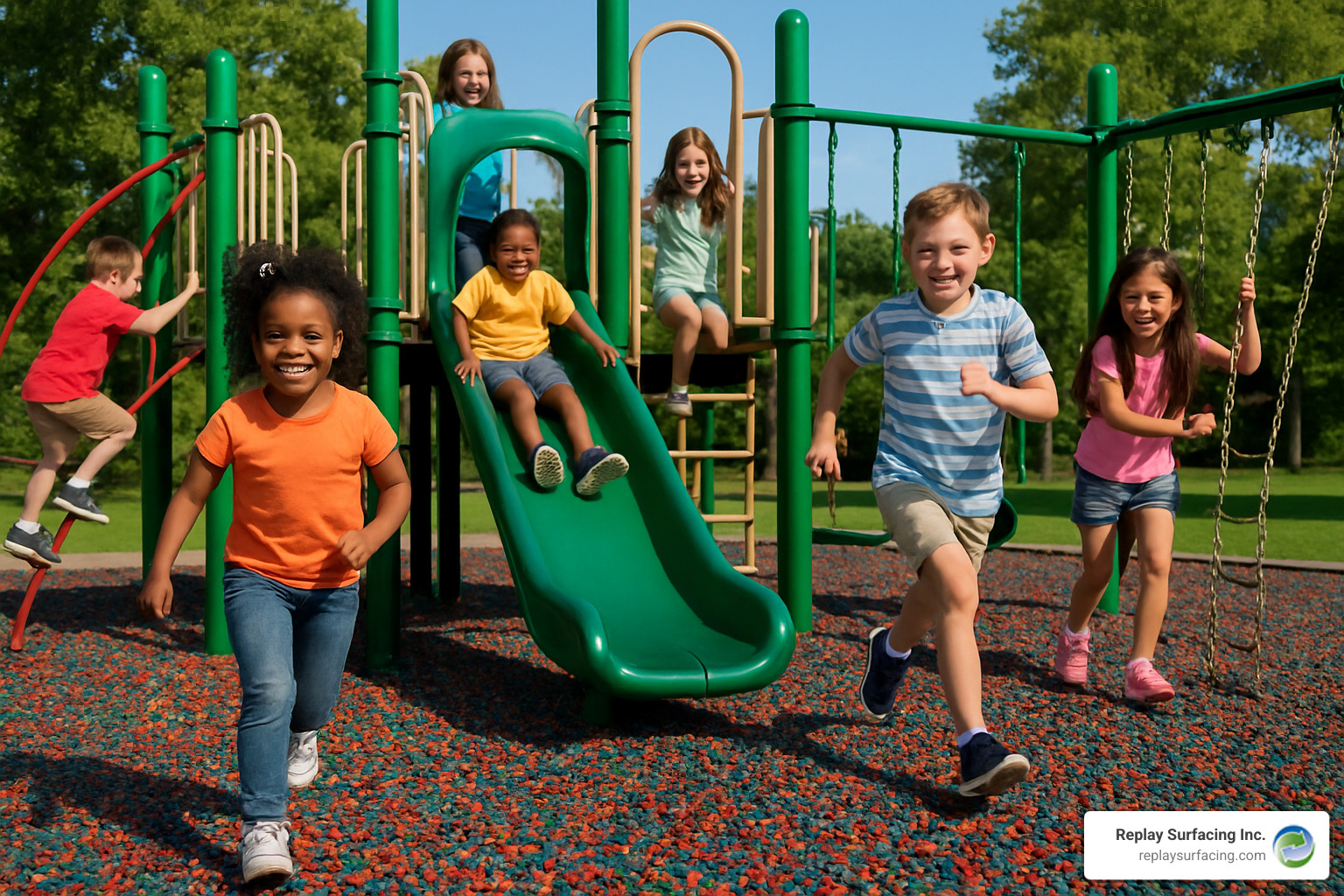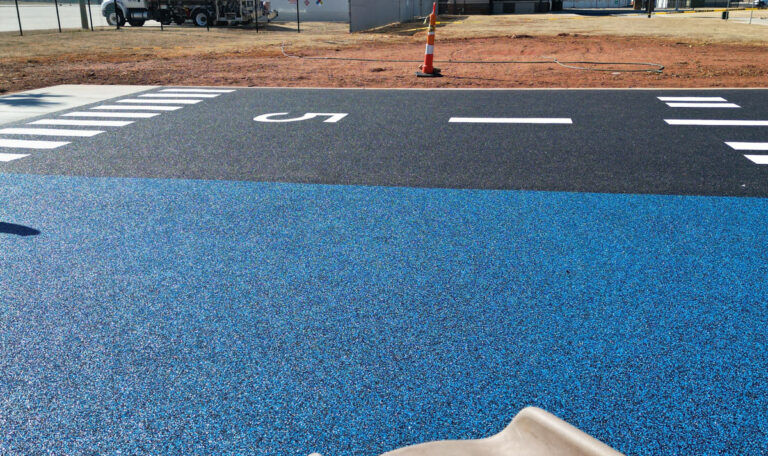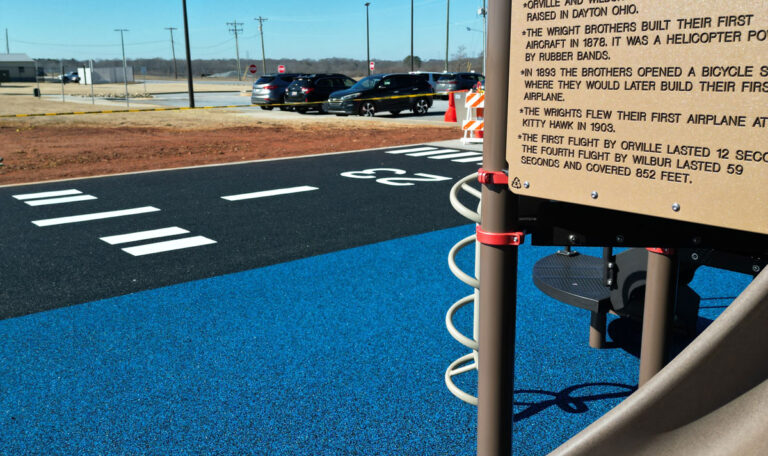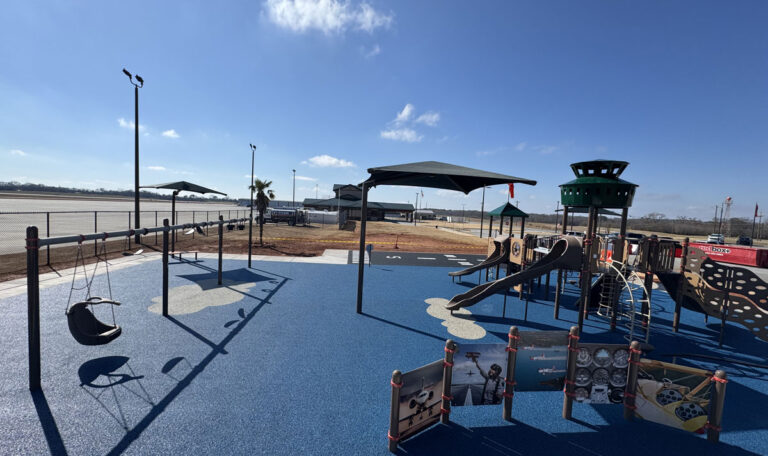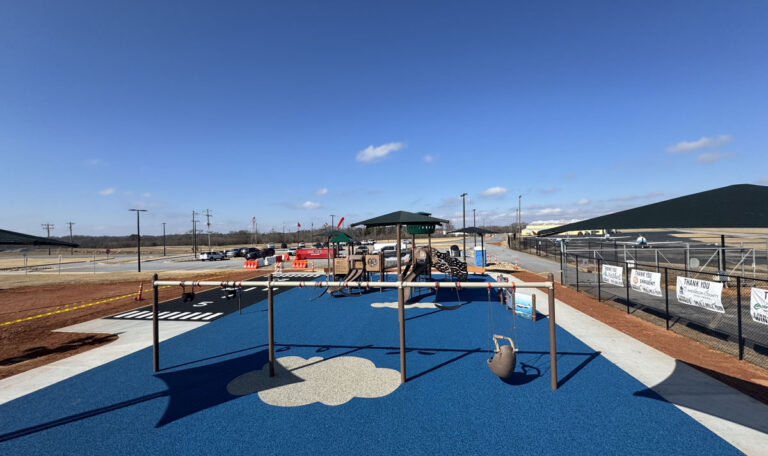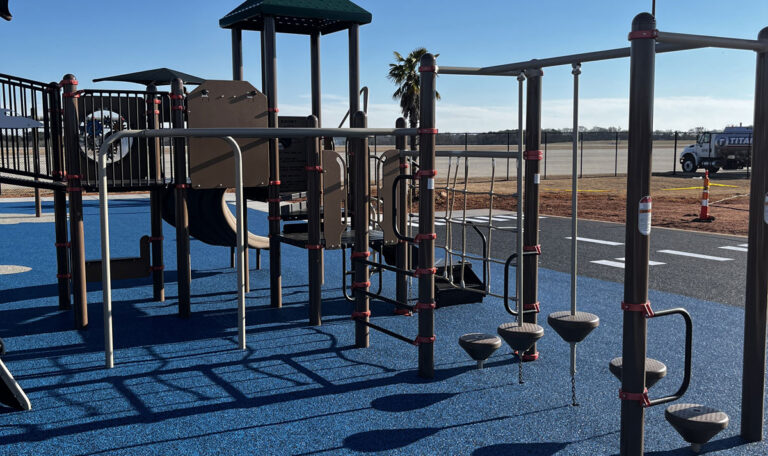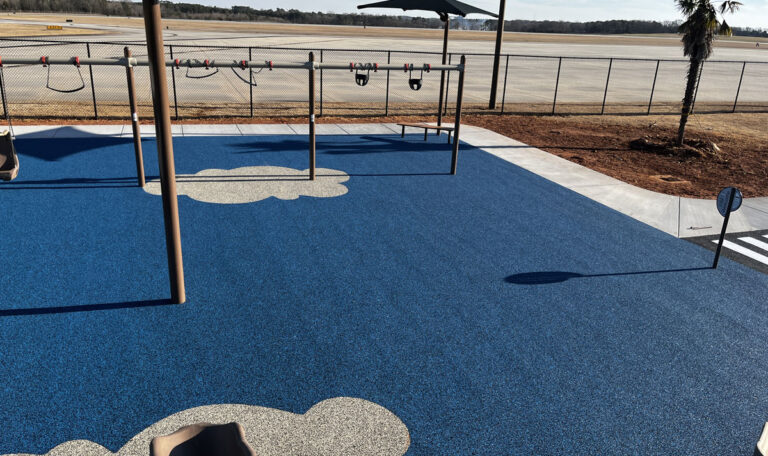The Hidden Concerns Behind Colorful Playground Surfaces
Rubber mulch toxic concerns have sparked heated debates among parents, facility managers, and environmental scientists as millions of children play on surfaces made from recycled tires every day. While federal agencies like the EPA and CPSC have conducted extensive studies, the question remains complex.
Quick Answer: Is Rubber Mulch Toxic?
– Heavy metals: 14 detected, but all within US/EU safety standards
– Chemical exposure: Limited according to EPA 2024 biomonitoring studies
– Bioaccessibility: Less than 3% of metals can be absorbed by the body
– Key concern: 6PPD-quinone compound toxic to aquatic life
– Bottom line: Low immediate risk to humans, but environmental impacts vary
The story often starts with good intentions. After tire disposal in landfills was banned in the 1980s, recycling those 290 million annual scrap tires into playground surfaces seemed like an environmental win. But as one parent in Bandon, Oregon finded, watching her toddler emerge from a playground “tainted in black” with tire crumbs raised uncomfortable questions about what children were actually exposed to.
Federal research tells a nuanced story. The EPA’s comprehensive 2024 study found that while recycled tire crumb contains metals, volatile organic compounds (VOCs), and other chemicals, actual exposure levels during play appear limited. However, newer research on compounds like 6PPD-quinone – which kills salmon when it leaches into waterways – has added fresh complexity to the safety equation.
As Landon Olson, a mechanical engineer with an MBA who operates Replay Surfacing, I’ve spent years working in manufacturing, sustainability, and safety surfacing industries, giving me insight into both the benefits and rubber mulch toxic concerns that facility managers face daily. My experience has shown that understanding the full picture – from chemistry to real-world performance – is essential for making informed decisions about playground safety.

Quick rubber mulch toxic definitions:
– loose fill playground surfacing
– wetpour rubber surfacing
– soft fall rubber mats
Is Rubber Mulch Toxic? Cutting Through the Science
When parents ask whether rubber mulch toxic concerns are real, the answer isn’t as simple as yes or no. The truth lies in understanding what’s actually inside recycled tire crumb and how children encounter these substances during play.
Think of a tire as a complex recipe. Manufacturers add dozens of chemicals to make tires durable, flexible, and weather-resistant. When we recycle these tires into playground mulch, those ingredients come along for the ride. The chemistry includes heavy metals like zinc (which can make up 2% of the rubber), lead, and cadmium. There are also organic compounds with intimidating names like polycyclic aromatic hydrocarbons (PAHs) and volatile organic compounds (VOCs).
The newest player in this chemical cast is 6PPD-quinone. This compound forms when a tire preservative called 6PPD meets ozone in the air. Scientists recently finded that 6PPD-quinone is deadly to salmon, adding a fresh environmental angle to the rubber mulch toxic debate.
But here’s where it gets interesting. The Scientific research on recycled tire crumb shows that what’s present in a material and what actually affects children can be very different things. The EPA, CDC, and CPSC spent years studying this exact question with real kids on real playgrounds.
Their findings revealed something crucial about leaching and bioaccessibility. Just because a chemical exists in rubber mulch doesn’t mean it easily transfers to children. Most organic chemicals stay put rather than floating into the air during active play. The exception? Indoor synthetic turf showed higher chemical concentrations than outdoor installations, which makes sense when you think about ventilation.
From our experience at Replay Surfacing, we’ve seen how epidemiology studies help bridge the gap between laboratory chemistry and real-world safety. The federal research focused on actual exposure during playground use, not worst-case scenarios that might never happen in practice.

Rubber Mulch Toxic Exposure: Key Findings
The EPA’s 2024 report delivered some eye-opening results about rubber mulch toxic exposure. When researchers examined the SVOCs profile (that’s semivolatile organic compounds), they found these chemicals mostly stay put during play rather than escaping into the air.
The real game-changer was the bioaccessibility research. Scientists finded that less than 1-3% of bioaccessible metals in tire crumb rubber can actually be absorbed by the human body. This is huge news because many risk assessments assume 100% absorption – a much more conservative estimate.
What does this mean for a child playing on rubber mulch? If they accidentally ingest small pieces, the vast majority of heavy metals would pass right through their system without being absorbed. It’s like how your body handles many things you eat – not everything gets absorbed into your bloodstream.
The CPSC playground survey added real-world context by watching how children actually behave on these surfaces. The biomonitoring pilot study compared blood and urine samples from kids who played on synthetic turf versus grass fields. The results? Metal levels in blood were similar to the general population, and there were no differences in PAH metabolites between the two groups.
However, the research comes with important footnotes. These studies focused on short-term exposure during play sessions rather than what might happen over years of use. Some scientists, including Dr. Philip Landrigan, point out that any exposure to known carcinogens could be concerning for children, who behave differently than adults and are still developing.
The EPA 2024 report represents the most comprehensive federal study to date, but it’s not the final word. Science continues evolving, especially as we learn more about compounds like 6PPD-quinone and their environmental impacts.
Health & Environmental Impacts, Benefits, and Regulations
The rubber mulch toxic conversation gets complicated when you step back and look at the bigger picture. Yes, there are chemical concerns worth discussing. But there’s also the stark reality that playgrounds without proper surfacing send thousands of children to emergency rooms every year.
Let me share some numbers that might surprise you. Nearly 114,000 kids end up in emergency rooms annually because of playground surface-related falls. About 5,500 children under age four suffer traumatic brain injuries on playgrounds each year. The economic cost? A staggering $1.2 billion annually.

This is where rubber mulch truly shines. When properly installed at 6-inch depth, it can provide up to 16 feet of critical fall height protection. That’s significantly better than traditional surfaces like grass, dirt, or sand. Unlike wood mulch that gets compacted when wet or scattered when dry, rubber mulch maintains consistent protection through all weather conditions.
The environmental story is more nuanced. The Playground study results show that while rubber mulch effectively recycles tires that would otherwise create disposal headaches, it can impact local ecosystems in ways we’re still understanding.
Zinc leaching presents a particular challenge. The zinc levels that meet human safety standards can still harm certain plant species and freshwater aquatic communities. It’s one of those situations where what’s safe for kids might not be ideal for the garden or nearby stream.
Then there’s the newly identified 6PPD-quinone compound, which has scientists concerned. This chemical forms when a tire preservative reacts with ozone in the air, and it’s been linked to salmon deaths in urban waterways. It’s a reminder that environmental impacts can extend far beyond the playground fence.
Heat retention is another practical concern that affects daily safety. On hot summer days, rubber mulch can reach surface temperatures as high as 172°F (78°C). That’s hot enough to burn little feet and hands. In our service areas like Tucson and Charlotte, where summer temperatures regularly climb above 90°F, this thermal property requires careful playground design and shade planning.
The regulatory landscape involves multiple agencies that don’t always see eye to eye. The EPA focuses on environmental and chemical safety, the CPSC emphasizes injury prevention, and ASTM F1292 provides technical standards for impact protection. The Americans with Disabilities Act (ADA) adds accessibility requirements that must be balanced with safety considerations.
At Replay Surfacing, we’ve learned that successful playground surfacing means navigating all these frameworks while addressing local climate and usage patterns. The More info about safety advantages of different surfacing options helps facility managers understand these complex trade-offs.
Is “Rubber Mulch Toxic” the Whole Story?
The Texas A&M University study offers a refreshing dose of real-world perspective on rubber mulch toxic concerns. Instead of testing pristine laboratory samples, researchers examined crumb rubber mulch from 16 actual public playgrounds that had been weathered, worn, and thoroughly used by children.
Their findings were reassuring: they detected 14 different heavy metals, but all 10 metals compared to safety guidelines were well within American and European safety standards. This matters because it shows that even after extended environmental exposure, acute toxicity risks remain limited.
The EPA biomonitoring pilot study backed up these findings with human data. When researchers measured chemical levels in people who regularly used synthetic turf fields, they found metal concentrations in blood were similar to those in the general population. No differences in PAH metabolites in urine were observed between users of synthetic turf and grass fields.
But here’s where it gets tricky: the zinc versus plant health equation remains problematic. While zinc levels may be perfectly safe for human exposure, those same concentrations can harm vegetation and aquatic ecosystems. It’s a classic case where rubber mulch toxic concerns may be minimal for direct human health but significant for environmental health.
The 6PPD-quinone findy has added new urgency to environmental discussions. This compound is highly toxic to coho salmon and potentially other aquatic species. Urban runoff can carry it from rubber surfaces into streams, creating ecological impacts miles away from the original playground installation.

The picture that emerges isn’t black and white. For immediate human health during playground use, the science suggests rubber mulch toxic risks are relatively low. But for long-term environmental health, particularly in sensitive aquatic ecosystems, the concerns are more substantial and deserve serious consideration in planning decisions.
Safer Alternatives & Smart Usage Guidelines
Given the complexity of rubber mulch toxic concerns, facility managers and parents need practical guidance for making informed decisions. At Replay Surfacing, we’ve found that the choice between different surfacing materials often depends on specific site conditions, usage patterns, and local environmental factors.
Virgin rubber products offer one alternative that addresses many tire-derived chemical concerns. Unlike recycled tire crumb, virgin rubber mulch doesn’t contain the complex mixture of tire manufacturing chemicals. However, virgin rubber typically costs significantly more and doesn’t provide the environmental benefit of tire recycling.
Wood chips and engineered wood fiber remain popular alternatives, particularly for facilities prioritizing organic materials. These surfaces can provide adequate fall protection when properly maintained, though they require more frequent replacement and can harbor insects or develop mold in humid conditions. Wood mulch also poses fire risks in dry climates and may contain chemical treatments depending on the source.
Poured-in-place rubber surfacing represents a premium option that combines recycled tire benefits with reduced loose-particle concerns. These systems use recycled rubber in a base layer topped with a virgin rubber wear surface, potentially minimizing direct contact with tire-derived chemicals while maintaining excellent safety performance.
The More info about Non-Toxic Rubber Mulch options we offer at Replay Surfacing include various formulations designed to minimize chemical exposure while maintaining safety performance. Our approach involves careful material selection and quality control to reduce concerning compounds.
| Surface Type | Fall Protection | Chemical Concerns | Maintenance | Cost | Environmental Impact |
|---|---|---|---|---|---|
| Recycled Rubber Mulch | Excellent | Moderate | Low | Medium | Positive (tire recycling) |
| Virgin Rubber Mulch | Excellent | Low | Low | High | Neutral |
| Wood Chips | Good | Low | High | Low | Positive (biodegradable) |
| Engineered Wood Fiber | Good | Low | Medium | Medium | Positive (biodegradable) |
| Poured-in-Place | Excellent | Low | Low | High | Moderate |
Smart usage guidelines can significantly reduce rubber mulch toxic exposure risks. Proper installation depth ensures optimal safety performance while minimizing the amount of loose material available for ingestion or inhalation. Regular maintenance, including raking and depth monitoring, keeps surfaces performing as designed.
Hand-washing protocols represent a simple but effective exposure reduction strategy. Encouraging children to wash hands before eating or drinking after playground use can significantly reduce ingestion of any surface particles. This practice is particularly important for younger children who are more likely to engage in hand-to-mouth behaviors.
Runoff controls become critical in environmentally sensitive areas. Installing drainage systems that capture and treat stormwater can prevent 6PPD-quinone and other compounds from reaching local waterways. This is especially important for installations near streams or in areas with sensitive aquatic ecosystems.
Shade structures address the heat retention concerns associated with rubber mulch. Strategic placement of trees, shade sails, or covered play areas can significantly reduce surface temperatures, making playgrounds safer and more comfortable during hot weather.
Balancing Safety and Cost: Is Rubber Mulch Toxicity Worth the Risk?
The rubber mulch toxic risk-benefit calculation requires careful consideration of both immediate safety needs and long-term health concerns. Our experience across multiple climate zones, from the humid conditions in Columbia, South Carolina, to the desert environment of Tucson, Arizona, has shown that local factors significantly influence this equation.
Life-cycle cost analysis often favors rubber mulch despite higher initial material costs. While wood chips may cost less upfront, they typically require replacement every 1-2 years, while quality rubber mulch can last 8-10 years with proper maintenance. This durability advantage becomes particularly pronounced in high-traffic installations or areas with extreme weather conditions.
Color fade represents a practical consideration that affects both aesthetics and potentially safety performance. High-quality rubber mulch with UV-resistant coatings maintains appearance longer, but all colored surfaces will eventually show wear. Planning for periodic color refreshing or accepting natural weathering helps set realistic expectations.
Heat mitigation strategies become essential in warmer climates. Light-colored mulch reflects more heat than dark colors, and proper drainage prevents heat-trapping moisture accumulation. In our Tucson installations, we’ve found that combining lighter colors with strategic shading can keep surface temperatures within acceptable ranges even during peak summer conditions.
The injury prevention benefits often outweigh chemical exposure concerns, particularly for high-risk playground equipment. Swings, slides over 4 feet high, and climbing structures create fall scenarios where proper impact attenuation can prevent life-changing injuries. The immediate, well-documented safety benefits must be weighed against the theoretical, long-term health risks that current research suggests are minimal.
Frequently Asked Questions about Rubber Mulch Toxicity
Does rubber mulch release harmful chemicals over time?
The short answer is yes, but the story isn’t as scary as it might sound. Rubber mulch toxic chemical releases do happen through weathering and normal playground use, but the EPA’s 2024 studies found that these emissions are generally well below harmful levels for children.
Think of it like a new car smell that gradually fades. Weathering actually works in our favor here – the most volatile compounds are released first, meaning chemical emissions tend to decrease over time rather than build up. This is quite different from what many parents fear might happen.
The research shows a clear difference between indoor and outdoor installations. Outdoor playgrounds benefit from natural air circulation, which keeps chemical concentrations lower than indoor synthetic turf fields. It’s nature’s own ventilation system working to protect our kids.
Hot weather does increase off-gassing, which is why we always recommend heat mitigation strategies in warmer climates. During our installations in places like Tucson, we’ve seen how proper shading and light-colored materials can make a significant difference in both temperature and chemical emissions.
Can rubber mulch hurt my garden or local streams?
This question hits on one of the more complex aspects of the rubber mulch toxic debate. While rubber mulch may be relatively safe for children, it can pose real challenges for plants and aquatic life.
Zinc leaching is the main culprit for garden concerns. The zinc levels that meet safety standards for human exposure can still harm sensitive plants, especially in acidic soils where metals become more easily absorbed. It’s a classic case where “safe for people” doesn’t automatically mean “safe for everything.”
The bigger environmental concern involves something called 6PPD-quinone. This compound forms when tire preservatives react with ozone in the air, and it’s particularly toxic to salmon and other fish species. When stormwater carries this chemical from rubber surfaces into streams, it can create ecological problems far downstream from the original playground.
Our approach at Replay Surfacing involves careful site assessment. We help clients understand drainage patterns and recommend barrier systems or alternative materials when installations are near sensitive waterways. Sometimes the best environmental choice is keeping rubber mulch away from areas where runoff could cause problems.
What precautions should parents take on playgrounds with rubber mulch?
The good news is that protecting your children from potential rubber mulch toxic exposure doesn’t require complicated strategies. A few simple habits can significantly reduce any risks while still allowing kids to enjoy safe playground experiences.
Hand-washing before snacks or drinks is your best defense. This simple step prevents ingestion of surface particles that might contain concerning compounds. We always tell parents this is the single most effective thing they can do, and it’s something kids can easily learn to do automatically.
Surface temperature checking becomes crucial during hot weather. Rubber mulch can get uncomfortably hot – sometimes reaching temperatures that could cause burns. A quick hand test before letting kids play can prevent thermal injuries. Light-colored clothing also helps children stay cooler on warm surfaces.
Supervision naturally reduces both chemical exposure and injury risks, especially with younger children who might put things in their mouths. Discouraging eating dropped food or intentionally tasting mulch particles helps minimize the exposure pathways that research identifies as most concerning.
Timing your playground visits can make a big difference too. Early morning or evening play sessions often provide more comfortable surface temperatures and reduced chemical emissions that tend to increase with heat. It’s a win-win for both safety and comfort.

Conclusion
The rubber mulch toxic question doesn’t have a simple yes-or-no answer, and honestly, that’s probably the most honest conclusion we can reach. After diving deep into federal research, environmental studies, and years of real-world experience, the picture that emerges is nuanced—like most things involving children’s safety and environmental health.
What we know for certain is that rubber mulch prevents serious injuries. When a child falls from playground equipment onto properly installed rubber surfacing, they’re significantly less likely to suffer a traumatic brain injury or broken bone. That’s not theoretical—it’s documented in emergency room data across the country.
At the same time, we can’t ignore the environmental concerns. The 6PPD-quinone compound that’s toxic to salmon is real, and zinc leaching can affect plant health. These aren’t problems we can wish away, even if the direct human health risks appear minimal based on current research.
At Replay Surfacing, we’ve learned that the best approach involves honest conversations about trade-offs. A playground in downtown Charlotte might have different priorities than one near a pristine mountain stream. A high-traffic school playground might prioritize injury prevention, while a low-use community park could explore more environmentally gentle options.
The encouraging news is that we’re not stuck with an either-or choice. Virgin rubber alternatives reduce chemical exposure concerns while maintaining safety benefits. Proper installation and maintenance can minimize environmental impacts. Smart design choices like drainage controls and heat mitigation make any surface safer and more sustainable.
What matters most is making informed decisions rather than perfect ones. Perfect solutions don’t exist in the real world, but good decisions based on solid information and local conditions absolutely do. Whether you’re managing a playground in Nashville, Columbia, or anywhere else, the goal is creating spaces where children can play safely while respecting the environment that sustains us all.
The research will continue evolving, and so will our recommendations. That’s not a weakness—it’s how science works. We stay curious, keep learning, and adjust our practices as we know more. In the meantime, simple precautions like hand-washing, temperature monitoring, and proper maintenance can address most current concerns.
For the latest information about playground surfacing options that balance safety, sustainability, and local conditions, visit our More info about playground surfacing page. Because every playground deserves surfaces that protect both the children playing today and the world they’ll inherit tomorrow.

